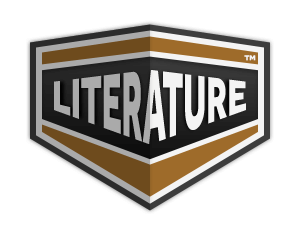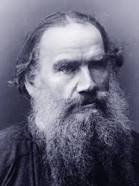How Balloons Are Made
It seems there may be some confusion regarding the author and the title you've mentioned. Leo Tolstoy, the renowned Russian writer, is best known for his novels "War and Peace" and "Anna Karenina," and there is no record of a book titled "How Balloons Are Made" attributed to him. If you are looking for a different book or author related to balloons or children's literature, please provide more details, and I would be happy to help!
If you take a blown-up bladder under water and let go of it, it will fly up to the surface of the water and will swim on it. Just so, when water is boiled in a pot, it becomes light at the bottom, over the fire,--it is turned into a gas; and when a little of that water-gas is collected it goes up as a bubble. First comes up one bubble, then another, and when the whole water is heated, the bubbles come up without stopping. Then the water boils. Just as the bubbles leap to the surface, full of vapoury water, because they are lighter than water, just so will a bladder which is filled with hydrogen, or with hot air, rise, because hot air is lighter than cold air, and hydrogen is lighter than any other gases. Balloons are made with hydrogen or with hot air. With hydrogen they are made as follows: They make a large bladder, attach it by ropes to posts, and fill it with hydrogen. The moment the ropes are untied, the balloon flies up in the air, and keeps flying up until it gets beyond the air which is heavier than hydrogen. When it gets up into the light air, it begins to swim in it like a bladder on the surface of the water. With hot air balloons are made like this: They make a large empty ball, with a neck below, like an upturned pitcher, and to the mouth of it they attach a bunch of cotton, and that cotton is soaked with spirits, and lighted. The fire heats the air in the balloon, and makes it lighter than the cold air, and the balloon is drawn upward, like the bladder in the water. And the balloon will fly up until it comes to the air which is lighter than the hot air in the balloon. Nearly one hundred years ago two Frenchmen, the brothers Montgolfier, invented the air balloons. They made a balloon of canvas and paper and filled it with hot air,--the balloon flew. Then they made another, a larger balloon, and tied under the balloon a sheep, a cock, and a duck, and let it off. The balloon rose and came down safely. Then they attached a little basket under the balloon, and a man seated himself in it. The balloon flew so high that it disappeared from view; it flew away, and came down safely. Then they thought of filling a balloon with hydrogen, and began to fly higher and faster. In order to fly with a balloon, they attach a basket under the balloon, and in this basket two, three, and even eight persons are seated, and they take with them food and drink. In order to rise and come down as one pleases, there is a valve in the balloon, and the man who is flying with it can pull a rope and open or close the valve. If the balloon rises too high, and the man who is flying wants to come down, he opens the valve,--the gas escapes, the balloon is compressed, and begins to come down. Then there are always bags with sand in the balloon. When a bag with sand is thrown out, the balloon gets lighter, and it flies up. If the one who is flying wants to get down, but sees that it is not what he wants below him,--either a river or a forest,--he throws out the sand from the bags, and the balloon grows lighter and rises again.
Translation
Translate and read this book in other languages:
Select another language:
- - Select -
- 简体中文 (Chinese - Simplified)
- 繁體中文 (Chinese - Traditional)
- Español (Spanish)
- Esperanto (Esperanto)
- 日本語 (Japanese)
- Português (Portuguese)
- Deutsch (German)
- العربية (Arabic)
- Français (French)
- Русский (Russian)
- ಕನ್ನಡ (Kannada)
- 한국어 (Korean)
- עברית (Hebrew)
- Gaeilge (Irish)
- Українська (Ukrainian)
- اردو (Urdu)
- Magyar (Hungarian)
- मानक हिन्दी (Hindi)
- Indonesia (Indonesian)
- Italiano (Italian)
- தமிழ் (Tamil)
- Türkçe (Turkish)
- తెలుగు (Telugu)
- ภาษาไทย (Thai)
- Tiếng Việt (Vietnamese)
- Čeština (Czech)
- Polski (Polish)
- Bahasa Indonesia (Indonesian)
- Românește (Romanian)
- Nederlands (Dutch)
- Ελληνικά (Greek)
- Latinum (Latin)
- Svenska (Swedish)
- Dansk (Danish)
- Suomi (Finnish)
- فارسی (Persian)
- ייִדיש (Yiddish)
- հայերեն (Armenian)
- Norsk (Norwegian)
- English (English)
Citation
Use the citation below to add this book to your bibliography:
Style:MLAChicagoAPA
"How Balloons Are Made Books." Literature.com. STANDS4 LLC, 2025. Web. 22 Feb. 2025. <https://www.literature.com/book/how_balloons_are_made_3965>.








Discuss this How Balloons Are Made book with the community:
Report Comment
We're doing our best to make sure our content is useful, accurate and safe.
If by any chance you spot an inappropriate comment while navigating through our website please use this form to let us know, and we'll take care of it shortly.
Attachment
You need to be logged in to favorite.
Log In